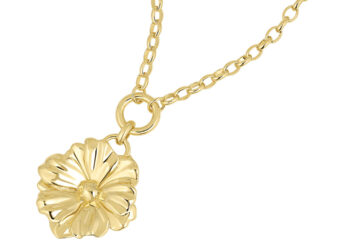Body Work

Body Work
Current treatments complement healthy habits
Posted on May 15, 2018
Bothered by bumps, lumps, and bulges? We all know that diet, portion control, and regular exercise are the best ways to lose weight and achieve a strong, slim, healthy body. But are there effective alternatives to get rid of excess or stubborn fat — love handles, muffin tops, and saddle bags? And what about those sagging upper arms? Here, local experts talk about how to address these problem areas with the latest treatments and trends in cosmetic dermatology and plastic surgery.
 “Body contouring is accomplished through a combination of noninvasive and minimally invasive techniques,” notes Dr. Melanie Palm of Art of Skin MD in Solana Beach. While treatments can lead to “an improvement in our silhouette,” she cautions that patients “should view treatments as a complement to good dietary and lifestyle habits, not as a means of weight loss.”
“Body contouring is accomplished through a combination of noninvasive and minimally invasive techniques,” notes Dr. Melanie Palm of Art of Skin MD in Solana Beach. While treatments can lead to “an improvement in our silhouette,” she cautions that patients “should view treatments as a complement to good dietary and lifestyle habits, not as a means of weight loss.”
A popular, widely marketed procedure is cryolipolysis, or Coolsculpting, a way to shape or contour the body by freezing unwanted fat with no surgery and little or no downtime. The procedure, performed by a doctor or other medical professional with specialized training, takes about an hour depending on how many areas are treated. Patients may feel intense cold initially, and pulling or mild pinching as a vacuum draws fatty tissue into an applicator. Side effects may include temporary bruising, redness, swelling, tenderness, and skin irritation. Most patients return to normal activities right after the procedure.
“Coolsculpting is a great procedure for patients who are looking to lose those stubborn fat bulges that don’t seem to go away with diet and exercise,” says Dr. Paul Chasan of Ranch & Coast Plastic Surgery in Del Mar. “It is not designed as a full body weight loss treatment, but rather for patients with specific areas that need mild to moderate improvement.” Those areas include the upper and lower abdomen, hips, back and bra-line fat, arms, and the inner and outer thighs. “Pretty much anywhere you can squeeze it, we can freeze it!”
Results can be seen from six to 12 weeks after treatment. A second treatment, if needed, can be performed in the same area six weeks later, with multiple treatments resulting in more impressive outcomes, says Dr. Chasan. “Like anything else in life, the more time and money you put in, the more dramatic the result.”
Coolsculpting is the top contouring treatment at Skinny Beach, an expanding chain of medical spas now in Del Mar Plaza, Clairemont, and Torrey Hills, with a fourth location set to open in Hollywood. Founded by Dr. Jennings Staley and wife Amanda, the practice was borne out of Amanda’s efforts to get her body back in shape after having two children. Dr. Staley says Skinny Beach is the only medical spa to incorporate a sophisticated body composition analysis to actually show fat loss after treatments. It uses InBody, a machine used by pro sports teams and hospitals, among others, to quickly analyze body fat, lean body mass, water, and other factors. The machine provides an initial “snapshot” of your body composition; subsequent tests can provide a timeline of your progress. While the goal isn’t weight loss, Skinny Beach also offers a weight loss program and other treatments.
Dr. Mitchel Goldman of La Jolla’s Cosmetic Laser Dermatology points out that while Coolsculpting is effective, he recommends the procedure “only for patients who have underlying medical issues or require just a small area (such as love handles) to be treated.” The problem is that only a limited area of fat can be removed in each session, he says, so multiple treatments are often needed, adding to both time and the overall cost of treatments.
While treatments can lead to an improvement in our silhouette, patients should view treatments as a complement to good dietary and lifestyle habits, not asa means of weight loss
Liposculpture, on the other hand, can be a one-time procedure performed under a local anesthetic. The process can reduce fat deposits in larger areas resistant to diet and exercise such as the abdomen, back, hips, flanks, thighs, and even calves and ankles. The best candidates are healthy and near their ideal body weight with pockets of unwanted fat. The procedure takes from one to three hours, depending on how many areas need to be treated. After numbing the area, small incisions are made and fat is removed using tiny instruments using vacuum pressure. “While individual results may vary, the way we perform liposuction under local tumescent anesthesia with tiny cannulas has very little down time,” says Dr. Goldman. An avid cyclist, he had liposculpture on his abdomen and “love handles,” went to dinner that evening, and did a 60-mile bike ride a day later.
Dr. Palm’s Art of Skin MD is the first dermatology practice in San Diego to offer Vanquish, a non-surgical body contouring procedure which, unlike Coolsculpting, heats rather than freezes unwanted fat. The treatment uses radio frequency to target and kill fat cells. A panel, designed to “conquer your core,” fits over the abdomen to whittle the tummy and waistline, although smaller areas of fat, such as the bra line back, inner and outer thighs, and upper arms can also be addressed. Clinical studies have shown results in as soon as two weeks after four weeks of treatment. There is no pain or downtime.
While working out with weights will tighten and tone arms, an area of cosmetic concern for women as they age is the upper arm, which keeps them from wearing sleeveless dresses. Brachioplasty, also known as an arm lift, is a surgical procedure to reduce excess skin, remove fat, and reshape the arm. “Brachioplasty is one of the most common procedures performed in women in their 60s and 70s, with incisions and arms generally healing very nicely,” says Dr. Chasan. “Many of my women patients have told me that after having a brachioplasty, they are now shopping for clothes that will show off their arms.”
Before undergoing any treatment, research procedures and consult with several doctors. “Ask how many procedures the physician has performed,” advises Dr. Palm. “Is the physician well-trained? Are they a thought leader in the field who lectures, advises, or performs clinical research? Ask the risks and benefits of treatment. Ask to speak with patients who have undergone a similar procedure. Ask to see if the physician is available 24/7 should a problem or concern arise.” In the end, she says, “Trust your gut. If you feel aligned with a health care professional, that is likely to be a trusting and successful patient-physician relationship.” Andrea Naversen





Comments